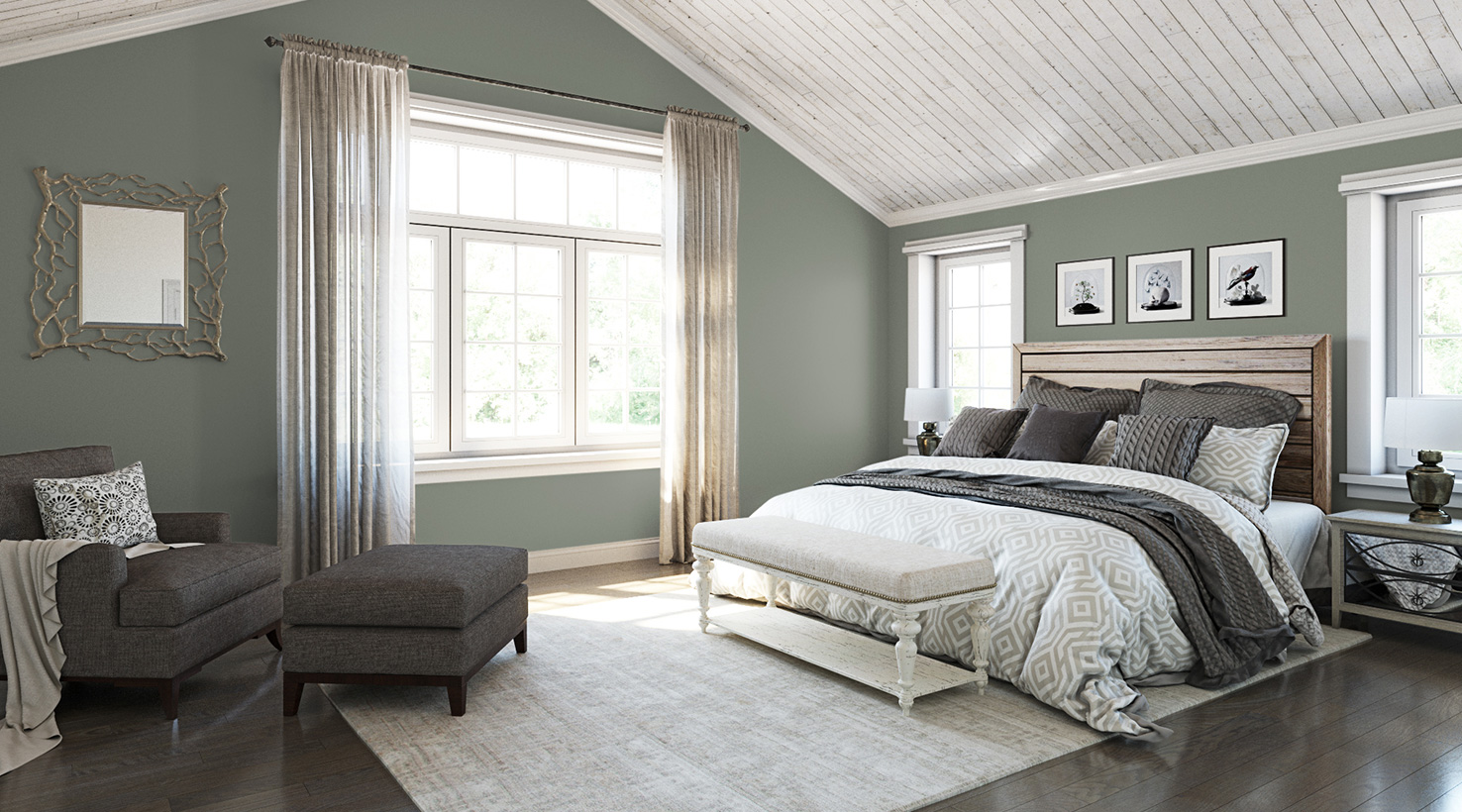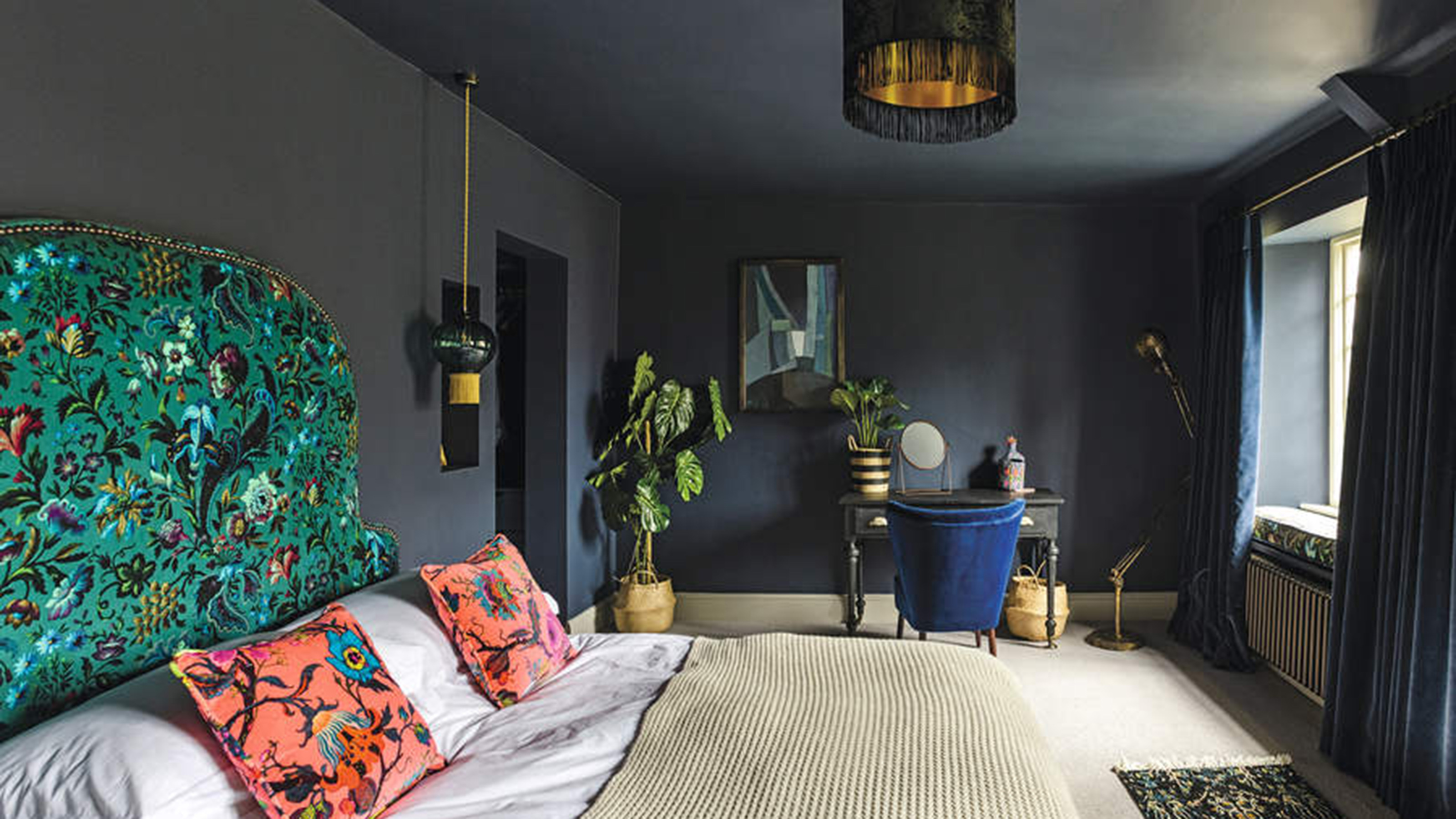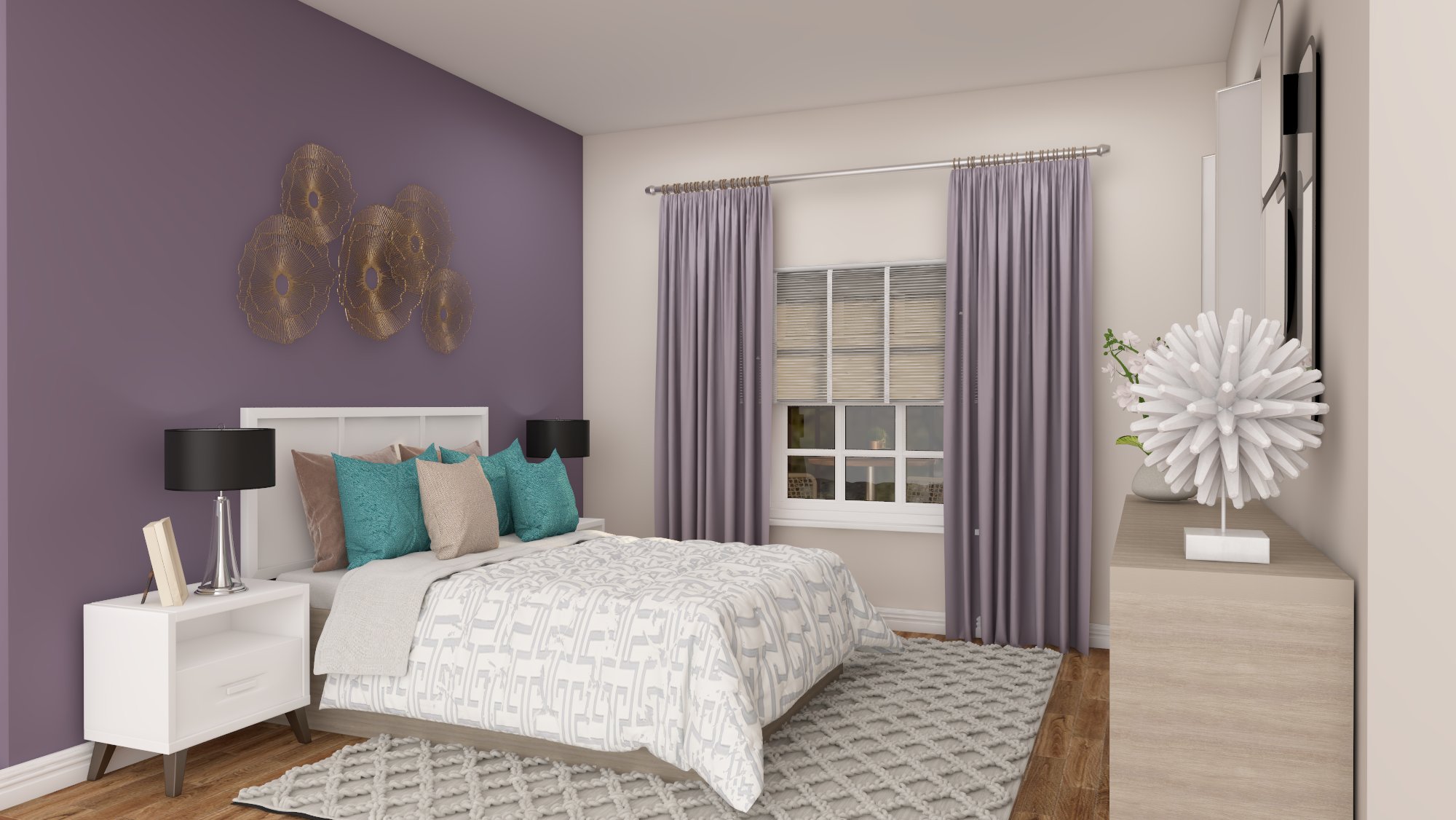Creating a Mood Board

A mood board is a visual representation of your design ideas, helping you to visualize the overall aesthetic of your bedroom. It can include paint colors, furniture styles, textures, and even artwork. Creating a mood board is a great way to gather inspiration and solidify your vision before you start painting.
Contrasting Color Schemes for a Dramatic Effect
Contrasting color schemes create a dramatic and visually stimulating effect. This is achieved by pairing colors that are opposite each other on the color wheel, such as blue and orange, red and green, or yellow and purple.
- Blue and Orange: This combination is both vibrant and calming, creating a sophisticated and inviting atmosphere. You can use a deep blue for the walls and accent with pops of orange in throw pillows, bedding, or artwork.
- Red and Green: This classic combination evokes a sense of energy and excitement. Use a deep red for the walls and complement it with accents of green in furniture, rugs, or plants.
- Yellow and Purple: This combination is both playful and sophisticated. Use a soft yellow for the walls and add pops of purple in curtains, lamps, or artwork.
Calming and Relaxing Color Combinations
Calming and relaxing color combinations create a serene and peaceful atmosphere. These often include shades of blue, green, and purple.
- Blue and Green: This combination evokes the feeling of nature and tranquility. Use a light blue for the walls and accent with shades of green in bedding, rugs, or plants.
- Green and Lavender: This combination is calming and soothing, creating a spa-like atmosphere. Use a soft green for the walls and complement it with lavender accents in bedding, curtains, or artwork.
- Gray and Beige: This combination is neutral and timeless, creating a sense of peace and serenity. Use a light gray for the walls and add beige accents in furniture, rugs, or bedding.
Bold Accent Walls and Complementary Colors
An accent wall can add a pop of color and personality to your bedroom. You can use a bold color for the accent wall and complement it with a softer color for the remaining walls.
- Teal Accent Wall: This vibrant color is both calming and energizing. Pair it with a soft white or gray for the remaining walls to create a balanced and inviting space.
- Yellow Accent Wall: This cheerful color can brighten up a room and create a sense of warmth. Pair it with a light blue or green for the remaining walls to create a calming and uplifting space.
- Red Accent Wall: This bold color adds a touch of drama and excitement to a room. Pair it with a neutral color like gray or beige for the remaining walls to create a balanced and sophisticated space.
Exploring Different Paint Finishes: B&q Bedroom Paint Ideas

Choosing the right paint finish for your bedroom is crucial for creating the desired ambiance and aesthetic. Each finish offers distinct advantages and considerations. Let’s delve into the various paint finishes available and their suitability for your bedroom.
Matte Paint
Matte paint is a popular choice for bedrooms due to its ability to create a calming and sophisticated atmosphere. The absence of sheen helps to minimize imperfections on the walls and create a smooth, even surface. Matte paint is also excellent at absorbing light, making it ideal for bedrooms where you want to create a cozy and intimate feel.
- Reduces glare: Matte paint absorbs light, minimizing glare and creating a more comfortable environment for sleeping.
- Hides imperfections: The absence of sheen helps to mask minor imperfections on the walls, resulting in a smoother and more polished look.
- Easy to clean: While matte paint is not as washable as other finishes, it can be cleaned with a damp cloth and mild detergent.
Eggshell Paint
Eggshell paint offers a subtle sheen that adds a touch of elegance to bedrooms without being overly reflective. It provides a balance between the flatness of matte and the sheen of satin, making it a versatile option for both walls and ceilings.
- Durable: Eggshell paint is more durable than matte paint, making it suitable for high-traffic areas.
- Washable: Eggshell paint is washable, allowing you to easily wipe away spills and marks.
- Soft sheen: The subtle sheen of eggshell paint adds a touch of sophistication without being overly reflective.
Choosing the Right Paint Finish for a Small Bedroom, B&q bedroom paint ideas
When selecting a paint finish for a small bedroom, it’s essential to consider the impact on the space’s overall feel. Lighter colors and finishes can make a small room feel larger and brighter.
- Light colors: Choose light colors to reflect more light, making the room feel more spacious.
- Matte or eggshell finish: Matte or eggshell finishes can help to minimize glare and create a sense of calm in a small space.
- Avoid glossy finishes: Glossy finishes can make a small room feel even smaller and more cluttered.
Gloss Paint
Gloss paint offers a high-sheen finish that is highly reflective and durable. While not as common in bedrooms, it can be used strategically to add a touch of glamour or highlight specific architectural features.
- Highly reflective: Gloss paint reflects light, making it ideal for rooms that need more brightness.
- Durable: Gloss paint is very durable and easy to clean, making it suitable for high-traffic areas.
- Can make a room feel smaller: The high sheen of gloss paint can make a room feel smaller and more cluttered.
Adding Visual Interest with Paint Techniques

Adding visual interest to your bedroom walls doesn’t have to involve complex wallpaper patterns or expensive artwork. Simple paint techniques can transform a plain wall into a statement piece, adding depth, dimension, and personality to your space.
Creating a Feature Wall with Geometric Patterns
Geometric patterns are a popular choice for adding visual interest to walls, and they’re surprisingly easy to create. You can use painter’s tape to create clean lines and sharp angles, or you can use a stencil for more intricate designs.
- Choose your colors and pattern: Select two or three colors that complement your bedroom’s decor. Decide on a simple geometric pattern, such as stripes, triangles, or squares.
- Prepare the wall: Ensure the wall is clean and free of dust and debris. You can use a primer to create a smooth, even surface.
- Mark the wall: Use a pencil and ruler to mark the pattern on the wall. If you’re using painter’s tape, press it down firmly to prevent paint from bleeding.
- Paint the pattern: Use a small roller or brush to paint the pattern. Apply thin coats of paint, allowing each coat to dry completely before applying the next.
- Remove the tape (if used): Once the paint is dry, carefully remove the tape. If you’re using a stencil, gently lift it away from the wall.
Using Stencils to Add Intricate Designs
Stencils offer an easy way to create intricate designs on walls without needing any artistic skills. You can find stencils in a variety of patterns, from floral motifs to geometric shapes to whimsical designs.
- Choose your stencil: Select a stencil that complements your bedroom’s style and color scheme.
- Prepare the wall: Clean the wall and apply primer if necessary.
- Secure the stencil: Use painter’s tape to secure the stencil to the wall. Ensure the stencil is level and aligned correctly.
- Apply the paint: Use a small roller or sponge to apply the paint to the stencil. Avoid pressing too hard, as this could cause the paint to bleed under the stencil.
- Remove the stencil: Once the paint is dry, carefully remove the stencil.
Using Ombre Paint Techniques
Ombre, meaning “shaded” in French, is a gradual transition from one color to another. This technique creates a visually appealing effect that can add depth and dimension to a wall.
- Choose your colors: Select two or three colors that blend well together. Consider using shades of the same color for a subtle ombre effect, or use contrasting colors for a bolder look.
- Prepare the wall: Clean the wall and apply primer if necessary.
- Create a gradient: Divide the wall into sections and paint each section with a different color. Blend the colors together by using a roller or brush to feather the edges.
- Apply multiple coats: Apply multiple thin coats of paint, allowing each coat to dry completely before applying the next.
Creating a Faux Finish on Walls
Faux finishes are paint techniques that mimic the look of other materials, such as stone, wood, or leather. They can add texture and visual interest to a wall, creating a unique and sophisticated look.
- Choose your faux finish: Decide on the type of faux finish you want to create. Popular options include sponging, ragging, and distressing.
- Prepare the wall: Clean the wall and apply primer if necessary.
- Apply the base coat: Paint the wall with a base coat of the desired color. Allow the base coat to dry completely.
- Apply the faux finish: Use a sponge, rag, or other tool to apply the faux finish. Experiment with different techniques to achieve the desired effect.
- Seal the finish: Once the faux finish is dry, apply a sealant to protect the finish and prevent it from getting damaged.
